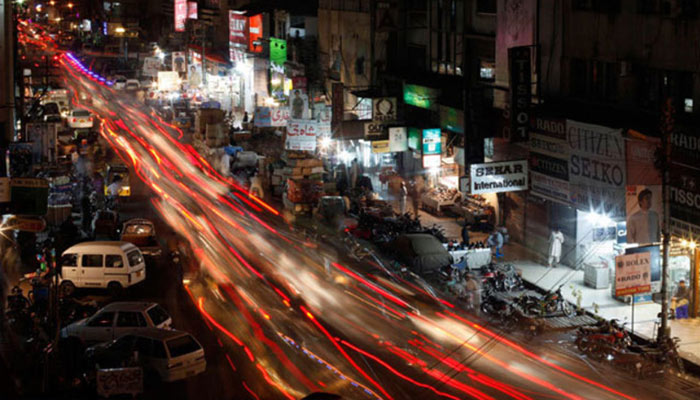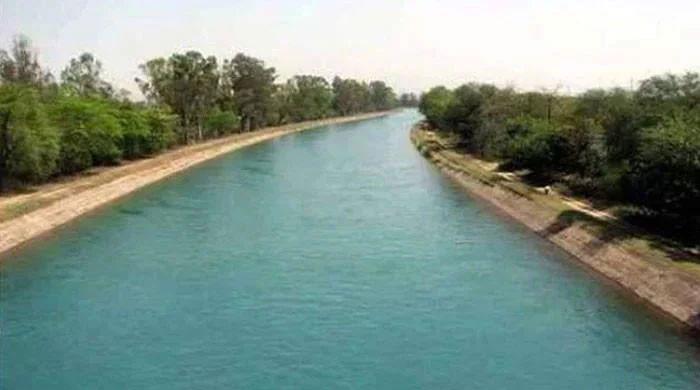Broke but flashy
Every year, billions of rupees are sunk into unsustainable, car-centric projects despite crumbling public transport system
December 24, 2024

One would think that a country like Pakistan, already teetering on the edge of an economic crisis and highly vulnerable to the effects of climate change, would prioritise policies that are not only equitable but also sustainable.
Surely, with a stretched development budget and underwhelming revenue collection from the Federal Board of Revenue, which recently fell short of its target by over Rs350 billion, we’d see a more cautious and strategic approach to spending.
But you’d be wrong. Dead wrong.
Instead, Pakistan’s urban planning remains fixated on vanity projects, flyovers, underpasses, and highways, that cater almost exclusively to the less than 10% of Pakistanis who own private cars. Every year, billions of rupees are sunk into these unsustainable, car-centric projects, even as the rest of the country struggles with crumbling public transport, high inflation, and worsening air pollution.
The question isn’t just why, but how. How is it that in the face of fiscal constraints and an underperforming economy, we continue to prioritise projects that serve the privileged few while ignoring the needs of the majority?
Surprisingly, or not, depending on how cynical you are, that is precisely what isn’t happening.
Pakistan’s urban planning is a glowing case study in misplaced priorities, backward thinking, and car-centric development. It’s not just the political leadership’s obsession with ‘mega projects’ that shine ever so bright on inauguration day, but the bureaucracy, led by the big brainers at Pakistan Administrative Service, plays a significant role in creating unsustainable cities.
Together, they’ve made urban development a contest of who can best ignore the needs of the people, designing cities that only the wealthy few would mistake for progress.
Every week, another headline trumpets a new 'mega project' aimed at 'reducing congestion'. Billions of rupees are funneled into widening roads and constructing more flyovers.
On the surface, these projects seem like progress. But dig a little deeper, and it becomes painfully obvious who benefits. It’s not the everyday Pakistani handling the chaos of public transport, and it’s certainly not the majority of people, those who rely on motorcycles, public transport, or simply their feet.
These projects serve the small minority, less than 10% of Pakistanis, who own private vehicles. For these privileged car owners, bureaucrats and elected public officeholders have practically rolled out the red carpet.
It’s a city-planning philosophy straight out of a dystopian handbook.
Here’s a fact about building more roads: it doesn’t solve traffic congestion. In fact, it makes it worse. It’s a phenomenon known as induced demand. The more roads you build, the more cars come to fill them. A few years down the line, the shiny new flyover or widened road is just as congested as the old one, and the cycle begins anew. The answer? Build more roads, of course.
It’s not that mass transit is an alien concept in Pakistan. Our first-tier cities offer glimpses of what’s possible. Lahore leads the way with its Metrobus, Orange Line, and an expanding network of feeder routes. Islamabad and Rawalpindi have made strides with their Metrobus system and new feeder route buses. Peshawar’s BRT has shown promise. But these efforts, while commendable, are grossly insufficient.
Karachi, the country’s economic heart, remains an embarrassment. Despite being home to over 20 million people, the city lacks a functional mass transit system. The World Bank reports that Karachi needs more than 10,000 buses to meet public demand, yet fewer than 1,000 operate today.
Similarly, Lahore needs over 10,000 buses, and Islamabad-Rawalpindi requires more than 1,000 additional buses to make its system sustainable. This is the reality of our first-tier cities. The situation in second-tier cities is even bleaker. There is no mass transit, no urban planning, and no effort to address the mobility needs of millions.
The root of this dysfunction lies in governance or, more accurately, the lack of it. Local governments, which should spearhead urban planning, are either non-existent or stripped of any meaningful power. In their absence, unelected bureaucrats call the shots, pushing through flawed policies and approving unsustainable, big flashy mega projects.
These projects, while visually impressive, fail to address the real issues of climate resilience, equitable mobility, and sustainable growth. By the time the consequences of their actions unfold, these ‘technocrats’ have already been transferred elsewhere.
The reality is stark: one, we don’t have the money for such projects; two, we borrow to make ends meet; and three, that borrowed money is spent on projects that do little to benefit the masses. At a time when the economy is stretched thin, every rupee spent should create maximum impact. Instead, we are investing in monuments to inefficiency, projects that serve the privileged few while leaving the majority to fend for themselves in crumbling urban environments.
Such misplaced priorities must be called out and actively discouraged. The leadership at the top needs to think this over, and think hard across party lines, across bureaucratic silos, and with a vision that prioritises sustainability, inclusivity, and long-term growth over fleeting political wins. Because without that shift in thinking, we are simply building towards failure.
The writer is an advocate for youth empowerment, climate action, and strengthening local governance.
Disclaimer: The viewpoints expressed in this piece are the writer's own and don't necessarily reflect Geo.tv's editorial policy.











